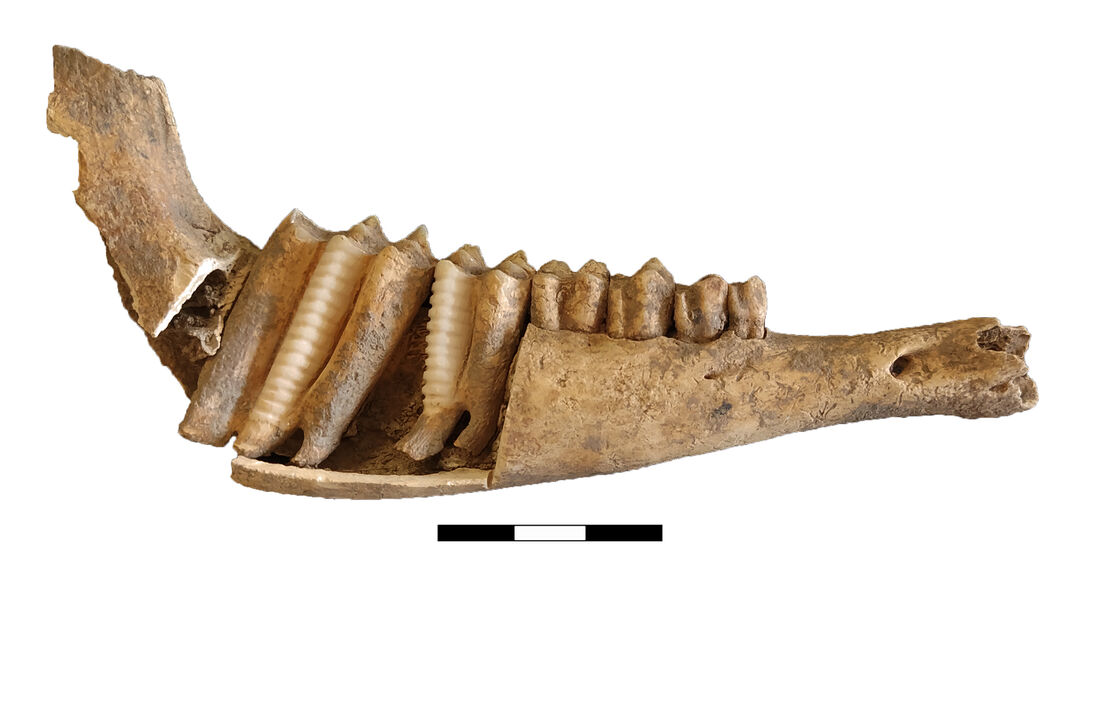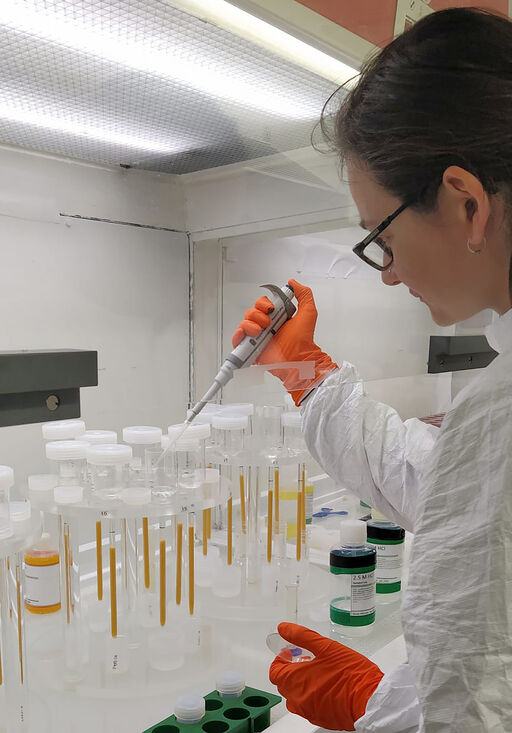2,500-Year-Old Roots of Transhumance: Pioneering Study Reveals Iberian Communities' Seasonal Livestock Movements
A study led by IPHES-CERCA and published in the journal Frontiers in Environmental Archaeology demonstrates that Iberian communities in Catalonia practiced seasonal altitudinal movements.
Livestock strategies were based on adaptation to the environment and the use of a sophisticated network of social and economic relationships
The analysis of the chemical and biological components of a set of sheep teeth has allowed researchers to confirm that between the 3rd and 2nd centuries BC, the population engaged in agriculture and livestock farming practiced seasonal altitudinal movements. During certain times of the year, they moved to live in the mountains, possibly to find better pastures for their animals.
Researchers were able to confirm this through biogeochemical analysis of different stable isotopes applied to a set of sheep teeth from four archaeological sites in Catalonia.
The findings are essential for understanding the livestock strategies adopted by Iberian communities, which relied on great adaptability to their environment and the use of a sophisticated network of social and economic relationships.
This is the main conclusion of the study published in the prestigious scientific journal Frontiers in Environmental Archaeology by Chiara Messana, a predoctoral researcher at IPHES-CERCA, along with Carlos Tornero (Autonomous University of Barcelona - IPHES), Richard Madgwick (Cardiff University), Angela L. Lamb and Jane Evans (British Geological Survey), and Lídia Colominas (Catalan Institute of Classical Archaeology, ICAC-CERCA).
Altitudinal Mobility in Catalonia During the Iron Age
Livestock strategies were based on adaptation to the environment and the use of a sophisticated network of social and economic relationships.
Seasonal altitudinal mobility has been a widely used practice for centuries by livestock communities in the Iberian Peninsula, allowing them to cope with Mediterranean climate changes. It was previously believed to have begun during Roman times, but the results of the recently presented research show that Iberian communities occupying our territory were already practicing livestock mobility strategies (especially for sheep).
Biogeochemical analysis of carbon, oxygen, and strontium isotopes applied to sheep dental remains from four Catalan archaeological sites (Mas Castellar de Pontós, Tossal de Baltarga, Sant Esteve d'Olius, Turó de la Rovira) has revealed a complex network of livestock movements by Catalan communities during the 3rd century BC.
These results highlight the extraordinary adaptability of Iberian populations in dealing with climate and geographic challenges before the arrival of the Romans and their zootechnical improvements, as noted by Chiara Messana (IPHES-CERCA).
A Society with Adaptable Livestock
Iberian populations during the Iron Age possessed extensive knowledge and experience in sheep breeding, management, and exploitation. This ability allowed them to successfully overcome the harsh mountain winters and arid lowland summers. However, the adoption of a mobile livestock strategy was not widespread and was closely related to environmental conditions, economic needs, and political decisions in each settlement.
As a result, the four examined sites in this study documented four different livestock models: Mas Castellar de Pontós (Girona, 154 meters above sea level) had a sedentary livestock system; at Tossal de Baltarga (Bellver de Cerdanya, 1166 meters above sea level), the only high-altitude settlement, part of the herd practiced seasonal altitudinal mobility between two complementary ecosystems, moving to the lowlands during winter; Sant Esteve d'Olius (Solsonès, 664 meters above sea level) showed a unidirectional mobility type, with the addition of sheep from external sources to the herd, likely as part of a product exchange system; and finally, at Turó de Rovira (Barcelonès, 266 meters above sea level), part of the herd practiced short-distance seasonal mobility during the summer.
Implications for Ancient Iberia
The results of this study not only provide a more comprehensive understanding of livestock management by Iberian communities in the northeastern Iberian Peninsula but also have significant historical implications. The early evidence of seasonal altitudinal movements between the Pyrenees and the lowlands at Tossal de Baltarga highlights the existence of a more integrated Iberian-Pyrenean world connected to lowland communities. Additionally, the study opens up a research avenue to identify similar strategies in the Iberian plateau, where this phenomenon may have also been present.
The study also underscores the existence of complex political relations between different Iberian communities inhabiting the northeastern Iberian Peninsula, which were crucial for facilitating the mobility of animals across different territories. As emphasized by Lídia Colominas, Ramón y Cajal researcher in the GIAP research group at ICAC-CERCA:
The study highlights the importance of livestock during the Iron Age and suggests the existence of specific grazing areas that complemented agriculture.
Significant Methodological Contributions
In addition to its historical importance, the new research also demonstrates the utility of combining data obtained from the analysis of carbon and oxygen quantities in dental remains with strontium analysis, a rare chemical element in nature that can be absorbed by the body and incorporated into the bone structure. It is used in the analysis of bone and dental remains for dating and archaeological research.
The study's results "emphasize the importance of using a multi-isotope analysis approach to more effectively trace herd movements across different altitudinal and geological zones," says Carles Tornero, a researcher at the Autonomous University of Barcelona and IPHES-CERCA, concluding:
This is the first time a study of this complexity has been conducted in Spain, investigating the chemical composition of sheep fossil remains (in this case, teeth) through multiple biogeochemical analyses that allow the reconstruction of the animals' living conditions".
This success was made possible through interdisciplinary research by teams from IPHES, ICAC, and UAB, which combined their expertise and analytical capabilities to achieve better results.
Paper citation:
Messana, C. Tornero, R. Madgwick, A. L. Lamb, J. Evans, L. Colominas (2023). "Between valleys, plateaus, and mountains: unveiling livestock altitudinal mobility in the Iron Age Iberian Peninsula (3rd c. BC) through a multi-isotope approach", Frontiers in Environmental Archaeology, Volume 2 – 2023.






